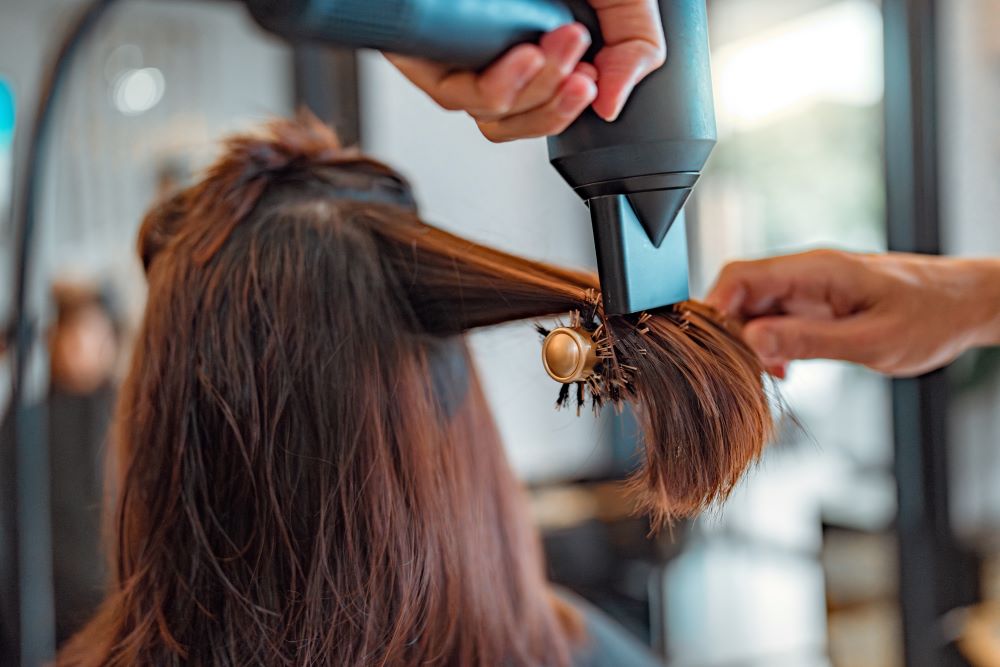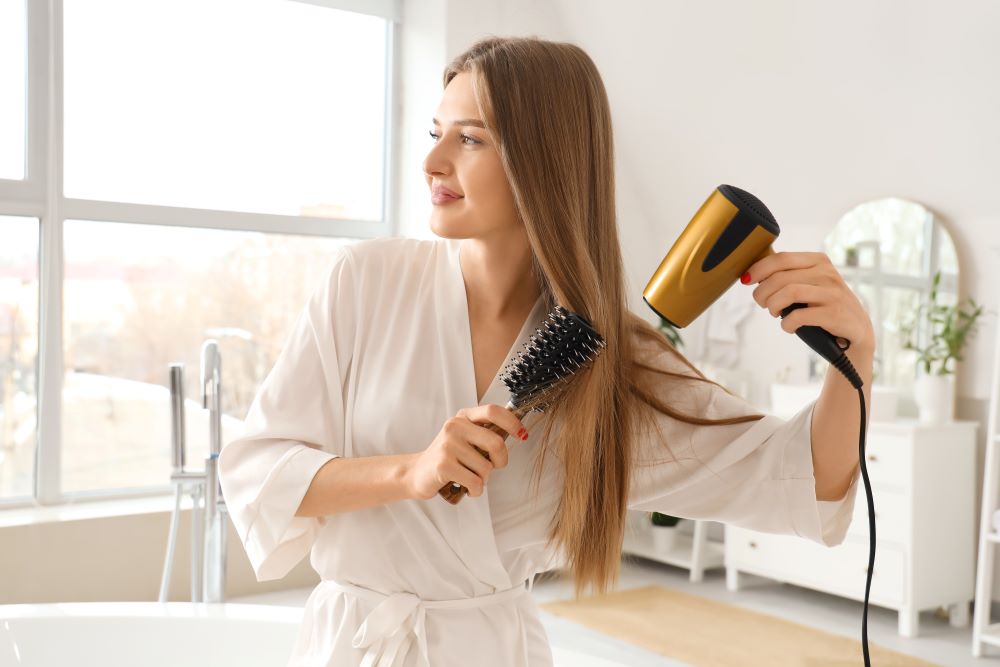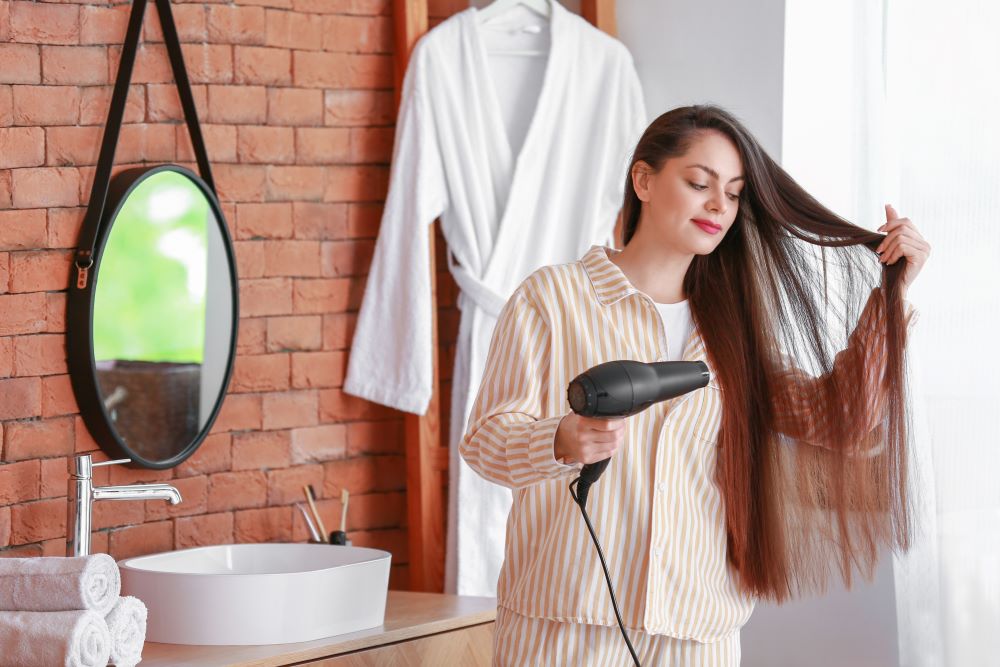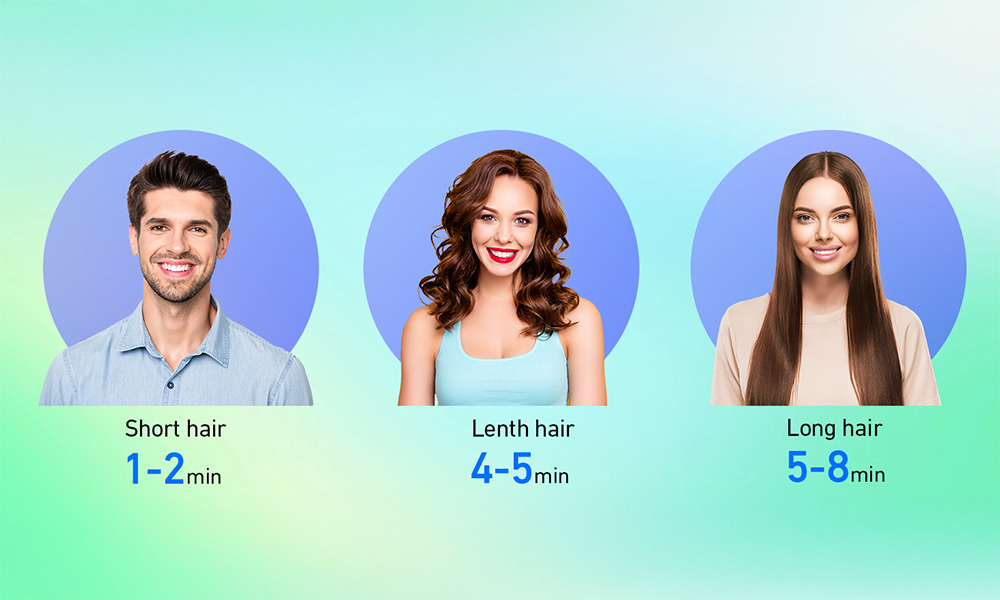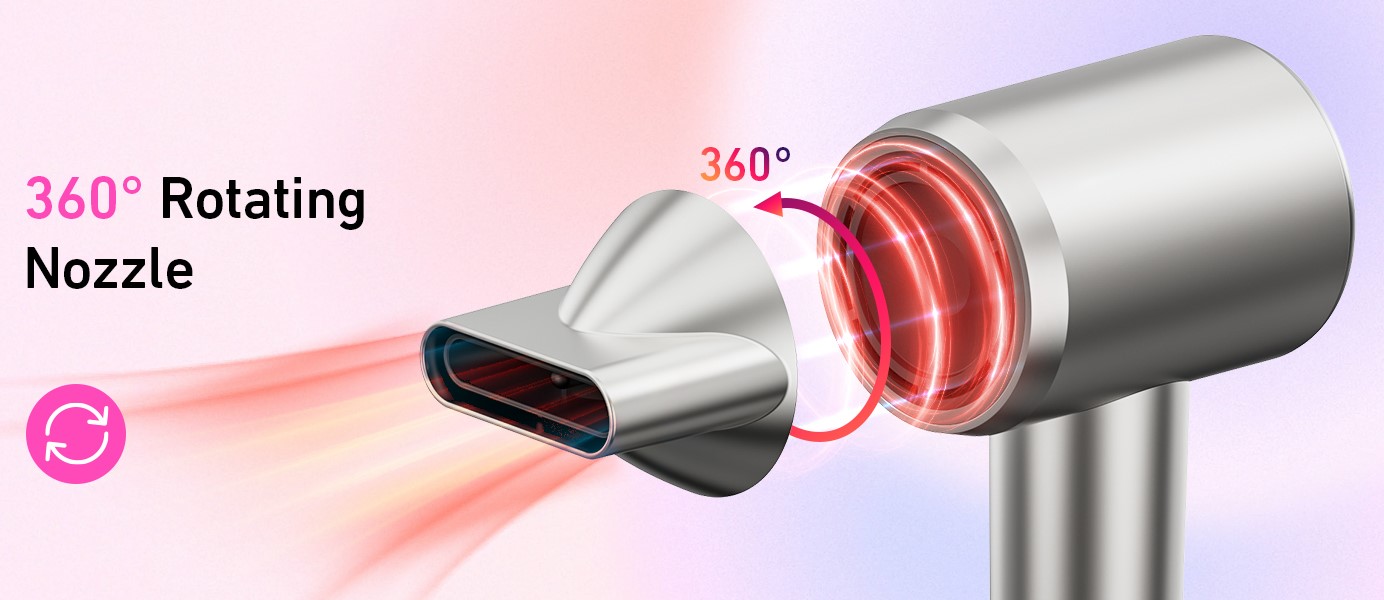
- Home
- Hair Dryer
- Hair Care Tips
- Taming Frizz: Your Guide to Easy Home Hair Care
Taming Frizz: Your Guide to Easy Home Hair Care

Frizzy hair is a common struggle for many people, but with the right home care routine and products, you can transform your hair from frizzy to fabulous. This guide will walk you through the steps of creating an effective home hair care regimen that is easy to follow, cost-effective, and designed to give you the smooth, sleek hair you desire.
Understanding Frizz and Its Causes
Frizz occurs when hair fibers absorb moisture from the air, causing the outer layer of the hair, the cuticle, to swell and become raised. This creates an uneven texture and gives hair that “puffy” or “frizzy” appearance. The primary causes of frizz include:
Humidity: Moisture in the air can penetrate dry or damaged hair, lifting the cuticles and creating frizz.
Heat Damage: Overuse of hot tools like hair dryers, flat irons, or curling irons can damage the hair’s natural moisture barrier, leading to frizz.
Lack of Moisture: Dry hair is more prone to frizz because it is more likely to seek moisture from the air.
Harsh Products: Hair products containing sulfates, alcohol, or harsh chemicals strip the hair of its natural oils, leading to dryness and frizz.
Over-washing: Shampooing too often can strip the hair of essential oils, leaving it dry and vulnerable to frizz.
Step 1: Identifying Your Hair Type

Before you can effectively combat frizz, it’s essential to understand your hair type. Hair types fall into four categories: straight, wavy, curly, and coily. Each type has different needs when it comes to frizz management.
Straight Hair: While less prone to frizz, straight hair can still suffer from dryness and flyaways. Focus on lightweight products to maintain smoothness without weighing the hair down.
Wavy Hair: Wavy hair is more prone to frizz because it has a natural texture that can easily puff up in humid conditions. Look for products that enhance your waves while taming frizz.
Curly Hair: Curly hair is naturally drier because the shape of the curl prevents oils from the scalp from traveling down the hair shaft. Hydrating products are key.
Coily Hair: Coily hair has the tightest curls, making it the most prone to dryness and frizz. Heavy, moisturizing products are essential to keep this hair type smooth and defined.
Step 2: Choosing the Right Hair Care Products

Selecting the right products is crucial to reducing frizz and improving hair health. Here’s a breakdown of key product types that can help transform frizzy hair:
1. Sulfate-Free Shampoo
Traditional shampoos contain sulfates that strip the hair of its natural oils, leading to dryness and frizz. Opt for a sulfate-free shampoo, which cleanses the scalp without stripping away moisture.
2. Moisturizing Conditioner
Conditioner is your best friend when fighting frizz. Look for moisturizing formulas that contain ingredients like shea butter, coconut oil, and argan oil. These ingredients help to seal the hair cuticle, locking in moisture and preventing frizz.
3. Leave-in Conditioner
A good leave-in conditioner adds an extra layer of moisture and protection throughout the day. Apply to damp hair after washing for long-lasting hydration.
4. Anti-Frizz Serums
Anti-frizz serums work by creating a barrier on the hair’s surface, locking in moisture and preventing humidity from causing frizz. Look for serums with silicones like dimethicone for smooth, shiny hair.
5. Heat Protectants
If you frequently use heat styling tools, a heat protectant is essential to shield your hair from damage. These products form a protective barrier that reduces the impact of high temperatures on your hair.
6. Deep Conditioning Masks
Deep conditioning treatments or hair masks should be used once a week to restore moisture and strengthen the hair. These treatments are especially beneficial for damaged or color-treated hair.
7. Drying Oils
Lightweight oils like argan oil or marula oil can be used on dry hair to smooth out frizz and add shine without weighing the hair down.
Step 3: Developing a Home Hair Care Routine
Consistency is key when it comes to taming frizz. Follow this easy hair care routine to keep your hair looking fabulous every day:
1. Pre-Shampoo Treatment
Before you shampoo, apply a pre-shampoo treatment like coconut oil or a deep conditioner to your hair. This helps protect the hair from losing too much moisture during washing.
2. Sulfate-Free Shampoo
Use a sulfate-free shampoo to gently cleanse the hair. Focus on the scalp, as this is where oils and dirt tend to accumulate. Avoid scrubbing the hair shaft too aggressively, as this can cause damage.
3. Conditioning
Apply a generous amount of moisturizing conditioner, concentrating on the ends of your hair where it is driest. Leave the conditioner in for a few minutes before rinsing with cool water to help seal the cuticle.
4. Use a Microfiber Towel
After washing, avoid rubbing your hair with a towel. Instead, use a microfiber towel or an old cotton T-shirt to gently squeeze out excess water. Rubbing can cause friction, leading to frizz.
5. Leave-in Conditioner and Serum
While your hair is still damp, apply a leave-in conditioner and a small amount of anti-frizz serum to lock in moisture and protect against humidity.
6. Air Dry or Diffuse
Whenever possible, allow your hair to air dry. If you must use a blow dryer, opt for a diffuser attachment to minimize heat damage and keep your hair’s natural texture intact.
7. Heat Styling (Optional)
If you prefer to heat style your hair, always use a heat protectant. Keep the temperature on your styling tools as low as possible to prevent damage. Aim for a sleek, smooth finish by working in small sections and using a flat iron or curling iron.
8. Night Care
At night, consider using a silk or satin pillowcase to reduce friction and prevent frizz while you sleep. You can also loosely braid your hair or wear a silk scarf to protect your hair overnight.
Step 4: Home Remedies for Frizzy Hair

If you prefer natural remedies, here are some DIY treatments you can try at home:
1. Coconut Oil Mask
Coconut oil is an excellent natural moisturizer that can penetrate the hair shaft and provide deep hydration. Apply warm coconut oil to your hair and leave it on for at least 30 minutes before rinsing.
2. Honey and Olive Oil Treatment
Mix honey and olive oil for a deep conditioning treatment that will leave your hair soft and smooth. Honey is a natural humectant, meaning it helps retain moisture, while olive oil adds shine and smoothness.
3. Apple Cider Vinegar Rinse
Apple cider vinegar helps to balance the pH of your hair and smooth the cuticle, reducing frizz. After washing your hair, rinse with a mixture of apple cider vinegar and water, then rinse thoroughly with cool water.
4. Avocado and Banana Mask
Avocados and bananas are rich in vitamins and nutrients that nourish the hair. Mash an avocado and a banana together and apply the mixture to your hair for 20 minutes before rinsing for softer, more manageable hair.
Step 5: Avoiding Common Hair Care Mistakes
Many people unknowingly contribute to their frizz by making simple hair care mistakes. Here are some things to avoid:
Using Hot Water: Washing your hair with hot water can strip it of moisture. Always use lukewarm or cool water to help seal the hair cuticle.
Skipping Conditioner: Conditioner is crucial for maintaining smooth, frizz-free hair. Never skip this step, even if you have oily hair.
Over-washing: Washing your hair too frequently can lead to dryness and frizz. Try to wash your hair only 2-3 times a week.
Brushing Wet Hair: Wet hair is more prone to breakage. Use a wide-tooth comb to detangle hair gently while it’s damp.
Using Too Much Heat: Limit the use of hot styling tools, and always use a heat protectant to avoid damaging your hair’s cuticle.
Step 6: Long-Term Hair Care Strategies
Frizz control is not just about quick fixes; it requires long-term care and attention. Incorporating these habits into your routine will help maintain smooth, manageable hair over time:
Regular Trims: Split ends can make hair look frizzier. Trim your hair every 6-8 weeks to keep it healthy and smooth.
Healthy Diet: Eating a diet rich in vitamins and minerals supports hair health. Include foods like eggs, salmon, nuts, and leafy greens for stronger, shinier hair.
Stay Hydrated: Drinking plenty of water helps keep your hair hydrated from the inside out.
Step 7: Choosing the Right Tools
Investing in the right tools can make a big difference in managing frizz. Here are some tools to consider adding to your hair care arsenal:
Wide-Tooth Comb: Use a wide-tooth comb to gently detangle wet hair without causing breakage.
Boar Bristle Brush: A boar bristle brush helps distribute natural oils throughout your hair, adding shine and reducing frizz.
Microfiber Towel: A microfiber towel is much gentler on your hair than a regular towel, reducing friction and frizz.
Ionic Hair Dryer: Ionic hair dryers help to break down water molecules quickly, reducing drying time and minimizing heat damage, which helps prevent frizz.
Conclusion
Taming frizz and achieving fabulous hair at home doesn’t have to be complicated. By understanding the causes of frizz, choosing the right products, and following a consistent hair care routine, you can maintain smooth, healthy hair every day. Incorporate these tips and strategies into your daily routine, and you’ll be well on your way to turning your frizzy hair into sleek, shiny locks.
Popular Post

Ultimate Guide to Using a Hair Dryer with Nozzle for Styling
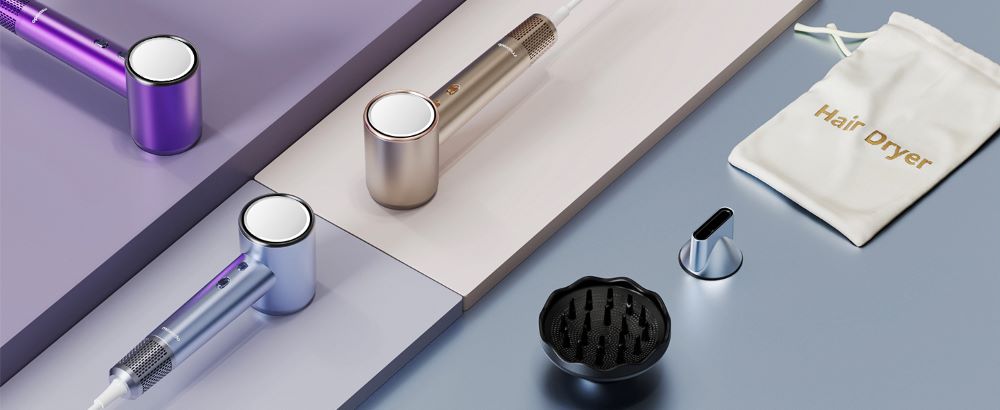
The Benefits of Using a Hair Dryer with a Diffuser
